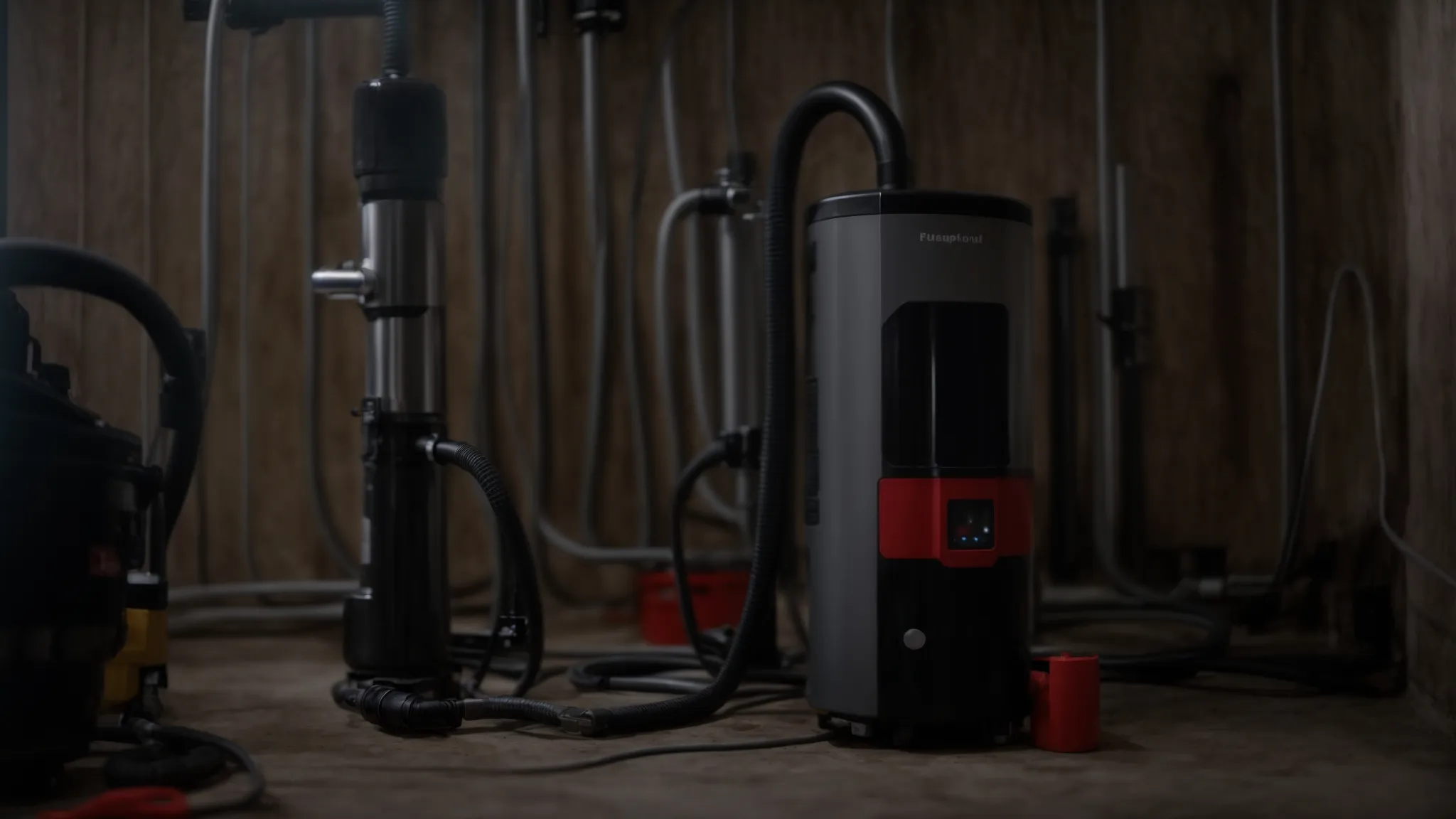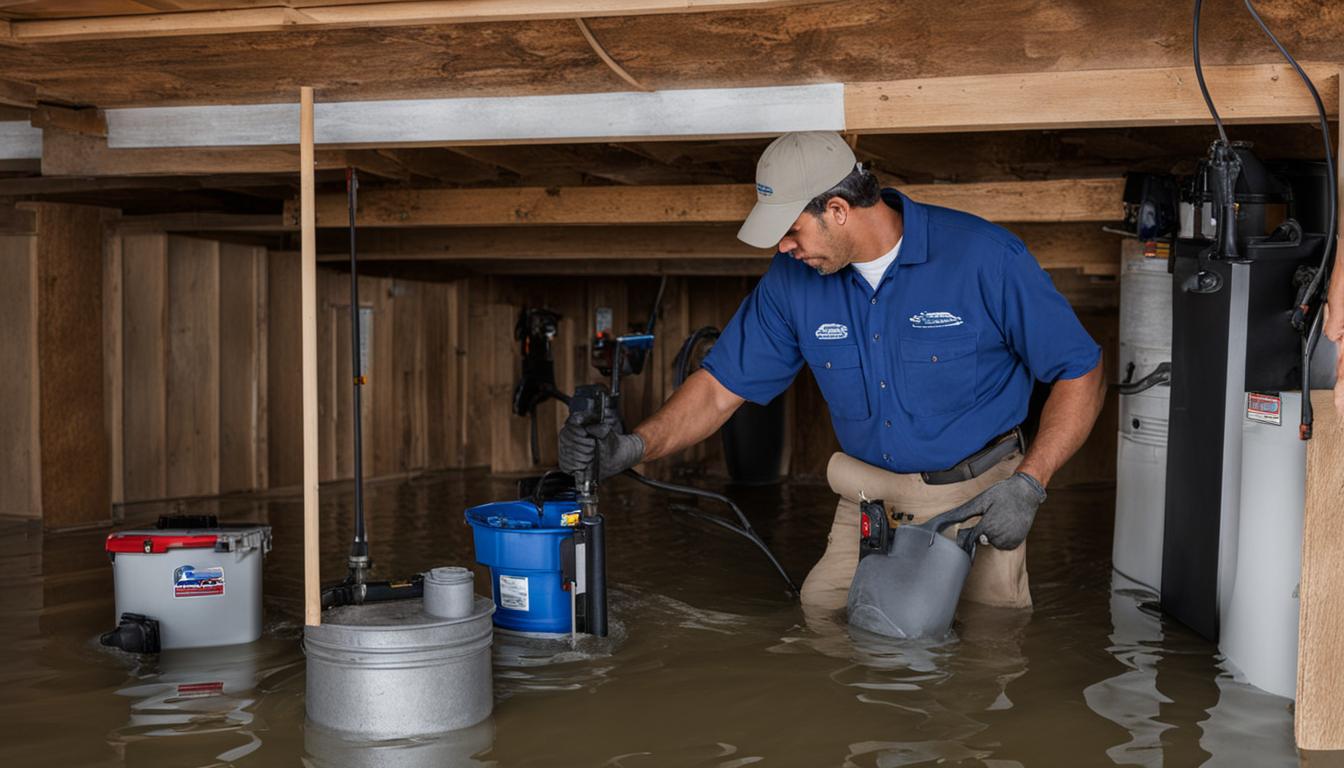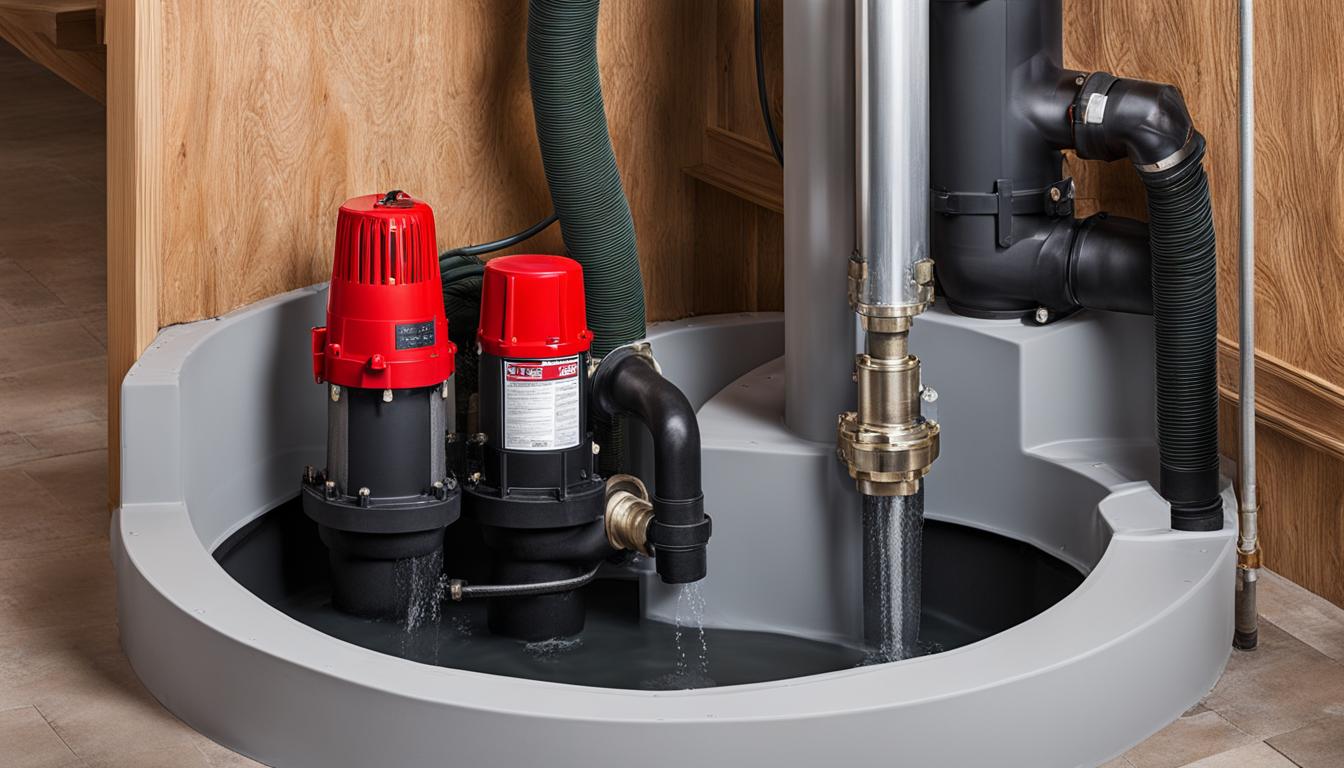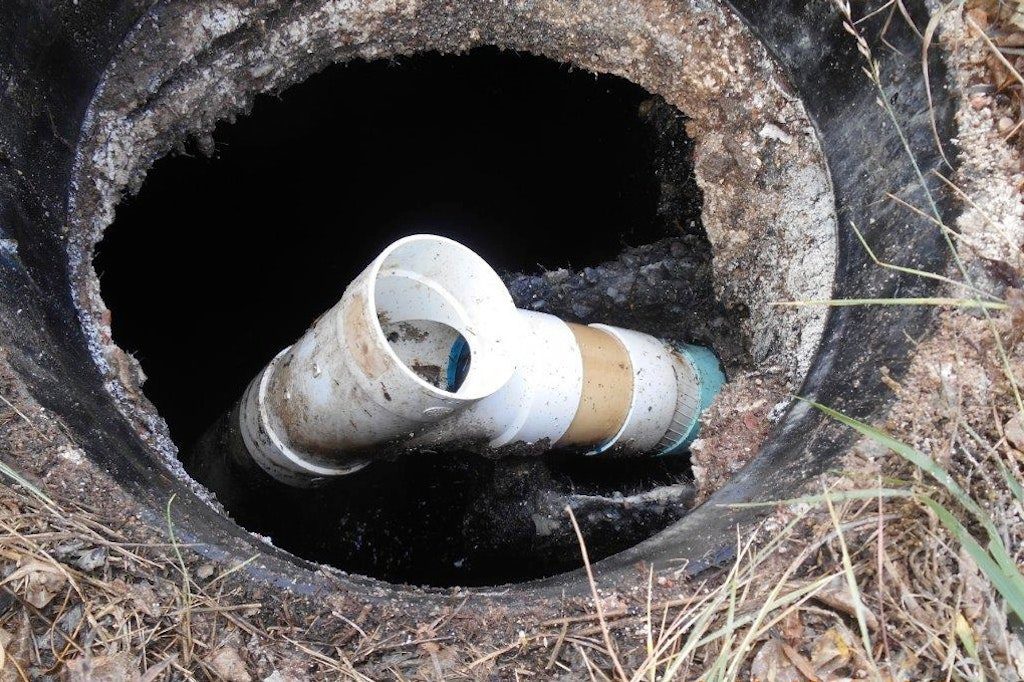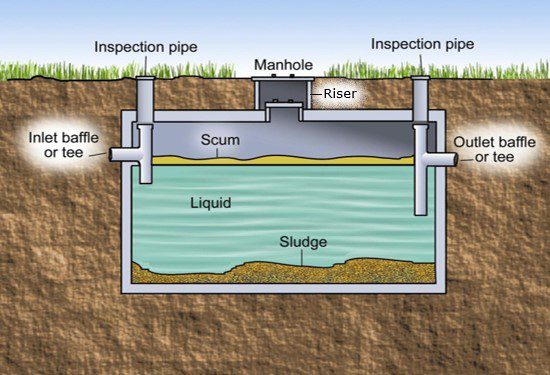How to Ensure Your Sump Pump Battery Backup Works
As homeowners cling to the notion that their basements will remain dry during a storm, the sump pump stands as a silent sentinel against the onslaught of water.
Selecting the steadfast heart of this flood-fighting champion—a robust battery—is a narrative rife with the need for wisdom and foresight.
Like a knight sharpening his sword before battle, the ritual of regular upkeep is your solemn vow to secure your stronghold from the tempest’s rage.
With storm clouds on the horizon, testing your sump pump’s resilience becomes an epic tale of foresight.
Keep reading to journey through the paces of safeguarding your home’s bulwark against nature’s unpredictable fury.
Key Takeaways
- Sump Pump Batteries Are Diverse, and Choosing the Right One Requires Understanding Specific Power Requirements
- Regular Maintenance and Inspection of the Battery Backup System Are Crucial for Sump Pump Reliability
- Performing Simulations of Power Outages Ensures the Battery Backup Is Prepared for Actual Emergencies
- Monitoring the Sump Pump Battery’s Age and Signs of Decline Can Prevent Untimely Failures
- Adding a Secondary Battery Backup With a Parallel or Series Configuration Can Increase System Resilience
Choosing the Right Battery for Your Sump Pump

As a guardian of my own domestic tranquility, I recognize the sump pump as the unsung hero, lurking beneath the surface with a vow to defend my basement against the onslaught of unwanted water.
In the heart of a storm, when the sky weeps with a fury that threatens to invade my sanctuary, the reliability of my sump pump hangs on the lifeline of its battery backup.
Anticipating the multitude of variables that can leave a homeowner adrift in high waters, I embark on a quest to dissect the art of selecting the perfect battery, one that promises to breathe unwavering life into my sump pump.
My journey will navigate through the murky waters of calculating power necessities, and pit various battery contenders against one another to uncover a harmonious union with my sump pump’s operational needs.
Assess Your Power Needs for Optimal Performance
Embarking on the delicate dance of discerning one’s sump pump power requirement is akin to tuning a finely crafted instrument to achieve perfect harmony. It demands an intimate understanding of the ampere-hour (Ah) rating that reflects the tank of energy at your disposal:
- Review past weather patterns and water volume tendencies.
- Estimate the duration and frequency of potential power outages.
- Calculate the expected operational time your sump pump would require to keep the waters at bay.
This symphony of numbers will lead you to a crescendo, where the chosen battery’s capacity must match your sump pump’s thirsty gulp for power: a balance that ensures steadfast performance in the face of torrential tribulations.
Compare Battery Types for Sump Pump Compatibility
In the realm of sump pumps, not all batteries are crafted equally; the palette of choices paints a vivid picture of variety. Absorbed Glass Mat (AGM) batteries stand as steadfast sentinels, offering maintenance-free assurance and spill-proof confidence, while Deep Cycle Lead-Acid options beckon with the promise of enduring resilience amidst the electrifying stress of sump pump demands.
- Assess whether AGM batteries’ spill-proof nature suits your space constraints.
- Evaluate Deep Cycle Lead-Acid batteries for their long-lasting service.
My quest for compatibility scrutinizes each contender, ensuring their specifications align with my sump pump’s electrical appetite. Lithium-ion batteries shimmer with allure, their lightweight and efficient storage capabilities whispering of modern marvels; yet for the vigilant homeowner, their higher upfront cost and the need for compatible charging systems pose a labyrinth of considerations.
A vigilant custodian of your basement’s dryness, your sump pump stands guard against flooding’s cruel whims. Now let’s empower this silent sentinel with routine upkeep, securing its steadfast performance against nature’s caprices.
Regular Maintenance Ensures Reliability

My vigilant pursuit of fortifying my home from nature’s unpredictability leads me to the cornerstone of sump pump care: regular maintenance of the battery backup system.
Like a conductor ensuring every instrument is pitch-perfect before the orchestra performs, I pencil in quarterly system inspections on my calendar.
Twinned with a biannual ritual of cleansing and testing the battery terminals, my meticulous routine is a testament to the dedication required to safeguard my serene abode from water’s whimsical wiles.
This commitment to maintenance is the very heartbeat of reliability, ensuring that, when the storm clouds gather, my sump pump’s battery backup stands ready and resolute.
Schedule Quarterly Inspection of Backup Systems
In my unyielding commitment to domestic defense against dampness, I mark each changing season with a ritualistic scrutiny of my sump pump battery backup. My quarterly inspections are thorough affairs, inviting no corner to hide negligence, no connection to harbor deceit, ensuring every joule of energy remains at the ready.
These calendared vigils serve as my fort’s bulwark against nature’s caprices; I test charge levels, inspect for corrosion, and verify the integrity of the system’s operation. Through this disciplined regimen, I bolster my confidence that, come hell or high water, my basement shall remain an impregnable bastion beneath my feet.
Clean and Test Battery Terminals Biannually
Twice a year, I engage in a sacred ritual with my sump pump battery, gently removing any accumulated corrosion with a solution akin to ambrosia for electrical connections: baking soda mixed with distilled water. It’s a delicate process, akin to an art restorer reviving the lost luster of a masterpiece, ensuring that each terminal gleams with the promise of optimal conductivity.
Post cleansing, my next act breathes life into the system through a meticulous evaluation; my multimeter, an extension of my own senses, probes the terminals, gauging their readiness to serve. This biannual examination is the pulse check, reassuring me that the lifeline to my sump pump stands robust and prepared to face any deluge destiny dares to dispatch.
As spring unfurls its verdant leaves, thoughts of turbulent, thunderous skies loom on the horizon. It’s time to steel our defenses and brace for the tempest’s test.
Testing the System Before Storm Season Hits

As storm clouds loom on the horizon, the time arrives to put my sump pump’s stalwart companion, the battery backup, through its paces.
My dedication to domestic fortification prompts a pre-emptive strike against the betrayal of power failure.
My intent: to simulate an outage, meticulously inspecting the seamless operation of my trusted floodgate sentinel.
It is a test of readiness—a drill that exposes the vigor of alarms and the robustness of the charging system, ensuring that when the heavens unleash their fury, my sump pump stands indomitable, reliable, a true bulwark against inundation.
Simulate a Power Outage to Check Operations
When the calendar whispers of impending tempests, I turn a discerning eye toward the unseen shield of my sump pump battery backup. By orchestrating a controlled power failure, I mimic the fists of a storm pounding at the electrical lifelines, ensuring my sentinel’s response is both swift and steadfast.
This self-inflicted blackout acts as a crucible, testing the mettle of my setup—will it flinch or flourish when the lights dim and the waters rise? The practice is a tableau, a silent testament to the readiness of my submerged ally as it awaits the clarion call to defend my home against Poseidon’s reach.
Verify Alarm Systems and Charging Functionality
Amidst my preparations, the sump pump alarm system beckons for my attention: a harbinger that requires thorough scrutiny. It’s an auditory sentinel tasked with piercing the silence should my basement’s aquatic adversary breach its confines.
| Inspection Item | Status | Action Required |
|---|---|---|
| Alarm Sound Check | Pending | Perform auditory test |
| Battery Charge Level | Full | Monitor for consistent output |
| Connection Integrity | Secure | Reinforce as needed |
Attuned to the vitality of my sump pump battery backup, I turn my vigilance to its charging system: the silent savior that replenishes vigor between skirmishes with seeping waters. Operationally sound charging is not just ideal—it’s the cornerstone upon which my peace of mind is built as tempests brew above.
Beneath the tranquil facade of spring lies the potential for tempests. Before gales turn skies grey, let’s pivot our attention to the silent sentinels within our electronics—batteries.
Monitor Battery Life to Prevent Failures

As I stand sentinel over my sump pump system, my awareness sharpens to the necessity of vigilant battery life monitoring.
It’s a critical chapter in the ongoing tale of household resilience against those sneaky aqueous invaders.
I’ve learned that being cognizant of the installation date transforms into a strategic asset, much like a chess grandmaster keenly aware of the age of his pieces.
Deciphering the tell-tale signs of a battery’s decline becomes akin to interpreting the whispers of the wind before a storm—foreknowledge equipping me with the power to preempt failure and preserve sanctity below ground level.
Keep Track of the Installation Date
My memory serves as a historian for my sump pump battery, chronicling its inception, much like a bibliophile treasures the publication date of a first edition. Scribbling this fundamental detail into my records ensures I track the battery’s age with precision, an essential practice for forecasting the need for a replacement before the creeping shadow of a failure darkens my basement.
Each glance at the installation date etched into my logbook echoes the ticking of a clock, a reminder that the lifespan of this submerged steward isn’t infinite. Acknowledging its temporal nature, I can strategize and schedule a timely succession, thus warding off the specter of a waterlogged disaster with a fresh energy source primed to power my bulwark against the tide.
Understand Signs of a Weakening Battery
My intuition becomes my ally, whispering when the capacity of my sump pump battery begins its slow fade into obsolescence. Diminished durations under load, a reluctance to hold charge, or the laborious groan of a straining pump signal a forbearance of imminent battery betrayal.
A seasoned eye discerns the subtler omens of decay—a sluggish response when the siphon sings its urgent song, or a once-bright indicator light now shadowed and dim. These harbingers of a battery’s twilight urge preemptive action to ensure my domestic haven is never caught unawares.
The lifeblood of our technology teeters precariously on the brink of exhaustion. Quickening our pulse, we embrace the safeguard of a secondary sentinel.
Installing a Secondary Backup as Precaution

Amidst the tapestry of precautionary measures, a secondary battery backup emerges as a sentinel’s shield, its presence a strategic bulwark fortifying my sump pump system.
My contemplation now turns towards the engineering crossroads of connection: whether to entwine additional power reserves in parallel, for increased current, or in series, for higher voltage.
This choice, not taken lightly, stitches another layer of confidence into my home’s aquatic armor, ensuring readiness whispers through the sump pump’s veins, even as Poseidon’s fury looms large.
Decide on a Parallel or Series Hookup Setup
In my pursuit to fortify my home’s defense against water’s encroachment, I stand at a junction, weighing the decision between a parallel or series hookup for an auxiliary battery backup. A parallel configuration would amplify the available amperage, granting my sump pump greater endurance during a relentless deluge.
- Gauge the power requirements of your sump pump to make an informed decision.
- Reflect on the merits and differences of parallel versus series connections.
- Consult with a professional to ensure the additional setup harmonizes with your primary system.
Alternatively, a series hookup could elevate the voltage, thus enhancing the brute force at which my sump pump operates. The labyrinthine choice beckons careful consideration, for the wrong path could lead to inefficiency or, worse, a malfunction in the hour of need.
Conclusion
Ensuring your sump pump’s battery backup is operational is crucial for protecting your basement from water damage, particularly during power outages.
To guarantee optimal performance, understand your power needs by assessing past weather patterns and estimating how long the pump needs to run during an outage.
Choose the right battery—be it AGM, Lead-Acid, or Lithium-ion—by matching it to your sump pump’s specifications and your budget.
Maintain your system with regular quarterly inspections and biannual terminal cleanings, and test the system before storm seasons to verify the backup and alarms work correctly.
Keep track of the battery’s installation date and be alert to signs of weakening like diminished capacity or a slow response.
For added security, consider installing a secondary battery in either parallel or series, depending on your pump’s requirements and seeking professional advice if necessary.
By diligently maintaining and monitoring your battery backup system, you can ensure it will reliably defend your home against flooding when needed.
